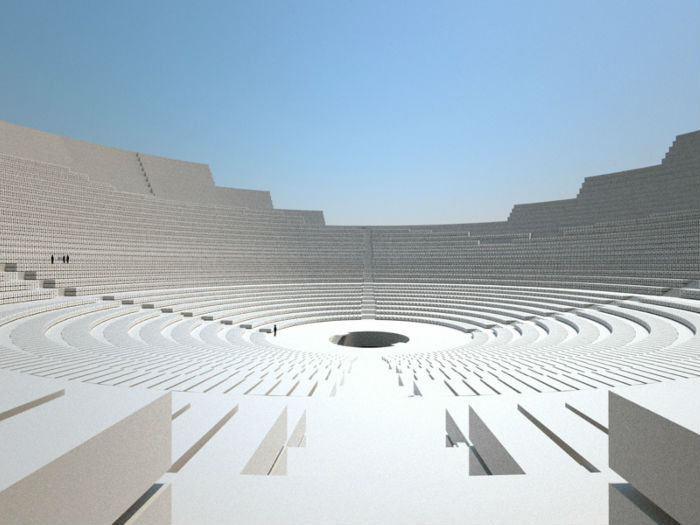I first wrote about the Yarauvi project two years ago, but given the current problems in the region it seems especially relevant, and worth re-visiting.
 There’s nothing more pleasing than a well designed necropolis, or city of the dead. When you think necropolis, you likely imagine the ancient burial grounds of the past. But let us look to the necropoli (necropoleis? necropoles?- there’s a lot of debate about what the plural is here) of the future.
There’s nothing more pleasing than a well designed necropolis, or city of the dead. When you think necropolis, you likely imagine the ancient burial grounds of the past. But let us look to the necropoli (necropoleis? necropoles?- there’s a lot of debate about what the plural is here) of the future.
Welcome Yarauvi, a necropolis designed by award-winning architects Miró Rivera, to be built smack in the center of the Dead Sea. Significant location not only because of the symbolism of the Dead Sea (emphasis on dead), but because of its precarious position, Jordon to the east, Israel and Palestine to the West.
In spirit it would be, “a place where any person—regardless of nationality, race, religion, age or affluence—can be laid to rest.”
Like the International Space Station of corpses. Reminder that we are all human, especially in death. We decompose the same, turn to bone the same.
The Dead Sea is hypersaline, roughly 8.6 times saltier than the ocean, which makes it extremely buoyant. The design of Yarauvi is based on constructing a giant floating bowl of the dead.
The body to be interred in Yarauvi would be ferried across the sea, like Charon symbolically ferrying a soul across the River Styx. Once inside Yarauvi, the structure is rings of sarcophagi facing one another in concentric circles.
 Here’s the architect’s description of how it would work:
Here’s the architect’s description of how it would work:
“Families will bid farewell to their loved ones from a dock at the southern banks of the Dead Sea. From there, the dead, accompanied by a few mourners, will be transported to Yarauvi by boat. The boat enters the necropolis at its base and travels through a ceremonial unicursal labyrinth that leads to the center point of the necropolis, where the dead are lifted to the space above. The accompanying mourners will also enter the necropolis this one time, during the interment of their loved ones.”
If Yarauvi already existed (and if I didn’t have to be embalmed and shipped halfway around the world) I would say sign me up. At least it’s a bold attempt to redefine multinational death and aesthetics, one “ceremonial unicursal labyrinth” at a time.
Yarauvi is not being built, and it likely never will be. But it’s worthwhile to dream of such a place. Not only for the possibilities of the architecture of death, but for what it would mean as a metaphor for life in seemingly awful times.


